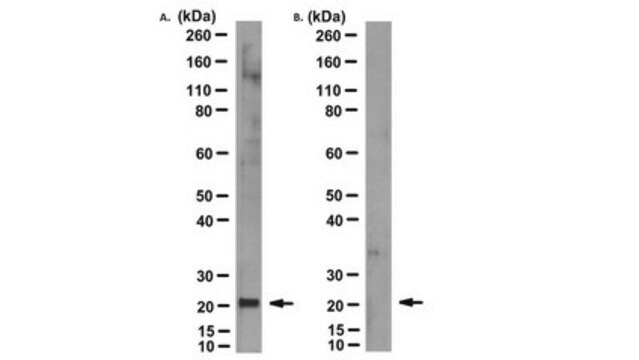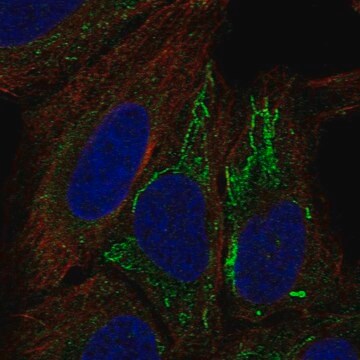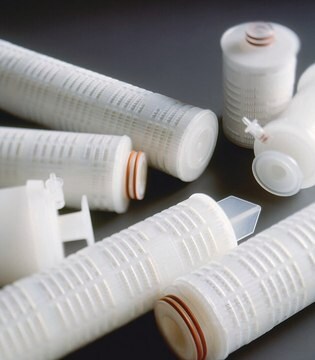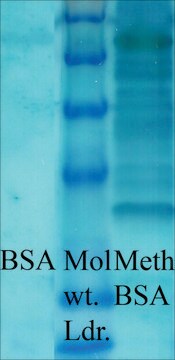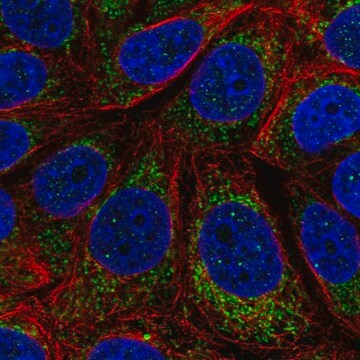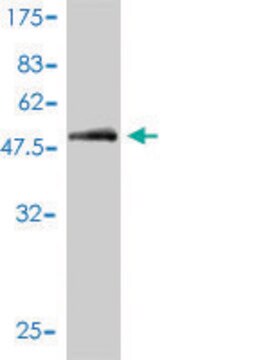MABS1994M
Anti-MT-ND4 Antibody, clone 9E4-2D8
clone 9E4-2D8, from mouse
Synonim(y):
NADH-ubiquinone oxidoreductase chain 4, EC: 1.6.5.3, NADH dehydrogenase subunit 4
About This Item
Polecane produkty
pochodzenie biologiczne
mouse
Poziom jakości
forma przeciwciała
purified immunoglobulin
rodzaj przeciwciała
primary antibodies
klon
9E4-2D8, monoclonal
reaktywność gatunkowa
human
opakowanie
antibody small pack of 25 μg
metody
western blot: suitable
izotyp
IgG2aκ
numer dostępu NCBI
numer dostępu UniProt
docelowa modyfikacja potranslacyjna
unmodified
informacje o genach
human ... MT-ND4(4538)
Opis ogólny
Specyficzność
Immunogen
Zastosowanie
Jakość
Western Blotting Analysis: 1 µg/mL of this antibody detected MT-ND4 in Mitochondria from human neonatal dermal fibroblasts and did not detect it in mitochondria from human neonatal dermal fibroblasts depleted of mtDNA.
Opis wartości docelowych
Postać fizyczna
Inne uwagi
Nie możesz znaleźć właściwego produktu?
Wypróbuj nasz Narzędzie selektora produktów.
Kod klasy składowania
12 - Non Combustible Liquids
Klasa zagrożenia wodnego (WGK)
WGK 1
Temperatura zapłonu (°F)
Not applicable
Temperatura zapłonu (°C)
Not applicable
Certyfikaty analizy (CoA)
Poszukaj Certyfikaty analizy (CoA), wpisując numer partii/serii produktów. Numery serii i partii można znaleźć na etykiecie produktu po słowach „seria” lub „partia”.
Masz już ten produkt?
Dokumenty związane z niedawno zakupionymi produktami zostały zamieszczone w Bibliotece dokumentów.
Nasz zespół naukowców ma doświadczenie we wszystkich obszarach badań, w tym w naukach przyrodniczych, materiałoznawstwie, syntezie chemicznej, chromatografii, analityce i wielu innych dziedzinach.
Skontaktuj się z zespołem ds. pomocy technicznej
